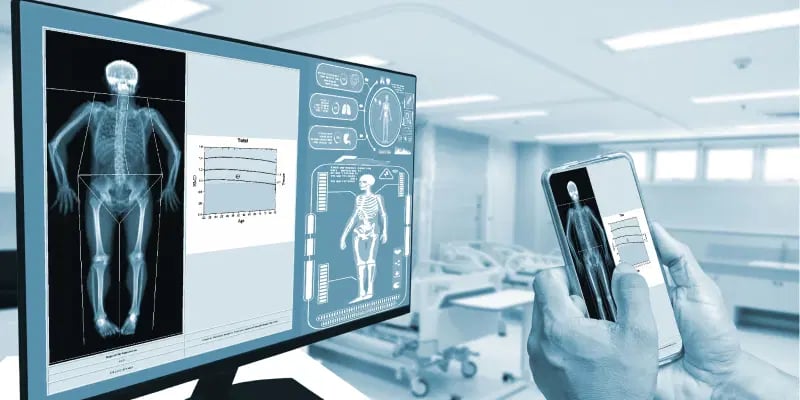Why Routine X-rays Are Essential for Preventive Healthcare
In the ever-evolving field of healthcare, preventive care plays a crucial role in identifying health issues before they become serious problems. Regular checkups, healthy lifestyle choices, and routine screenings are integral parts of a preventive healthcare strategy. One essential tool in preventive healthcare that often gets overlooked is the routine X-ray. While many people associate X-rays with diagnosing fractures or detecting cancer, their role in preventive care is much broader and more important than most realize. In this blog, we’ll explore why routine X-rays are essential for maintaining good health, identifying potential health problems early, and ultimately improving long-term outcomes.
3/6/20254 min read


1. Early Detection of Diseases
Routine X-rays serve as a powerful tool for the early detection of diseases, many of which may not show obvious symptoms in their early stages. By identifying problems like lung diseases, cardiovascular conditions, bone diseases, and cancers early, healthcare providers can take preventive or corrective measures before the condition worsens.
For example:
Chest X-rays can help detect early signs of lung infections, pneumonia, and even lung cancer.
Dental X-rays can identify cavities, gum disease, or other oral health issues before they cause pain or discomfort.
Mammograms (a specialized form of X-ray) are used to detect breast cancer before it can be felt by the patient.
The key benefit of routine X-rays is that they can often catch a disease or condition in its early, more treatable stage, significantly improving a patient’s prognosis and reducing the need for aggressive treatments.
2. Monitoring Bone Health
X-rays are particularly useful in monitoring bone health, a critical aspect of preventive healthcare as we age. Conditions like osteoporosis (a condition where bones become weak and brittle) can lead to fractures and other complications if not caught early. Routine bone density X-rays (also known as DEXA scans) allow healthcare providers to assess bone strength and identify areas of concern before they become more problematic.
For example:
In older adults, a DEXA scan can help identify early signs of osteoporosis, leading to early interventions such as lifestyle changes, medication, or physical therapy to prevent fractures and improve bone health.
Spinal X-rays can help detect issues like curvature abnormalities (scoliosis) or disc degeneration, allowing for early treatment and better outcomes.
Routine X-rays for bone health ensure that conditions like osteoporosis are addressed before they lead to fractures or significant pain, significantly improving the quality of life for individuals at risk.
3. Preventing Dental Problems
Dental health is often overlooked in the broader context of preventive healthcare, but dental X-rays are an essential part of maintaining oral health. Dental X-rays help in detecting issues like cavities, gum disease, and dental abscesses that may not be visible to the naked eye. Routine dental X-rays are critical in:
Detecting cavities early, even before they cause pain.
Identifying impacted teeth, abscesses, and infections.
Evaluating the health of tooth roots and jawbones.
By catching these problems early, dental professionals can implement treatments that prevent more significant issues, such as tooth loss or infections that could spread to other parts of the body.
4. Monitoring Heart and Lung Health
Chest X-rays are one of the most common tools used to monitor the health of the heart and lungs. Even if a person feels fine, certain conditions like heart disease, lung infections, or tumors can progress without noticeable symptoms. Regular chest X-rays can provide critical insights into the status of your lungs and heart. For example:
Chest X-rays can reveal signs of pneumonia, tuberculosis (TB), or chronic obstructive pulmonary disease (COPD), which may otherwise go undetected in the early stages.
Cardiomegaly (enlarged heart), a condition often related to heart disease, can also be spotted on a chest X-ray.
By detecting these conditions early, patients can begin treatment immediately, preventing further damage to the organs and improving their chances of recovery.
5. Preventing Cancer
X-rays play an instrumental role in cancer detection, particularly in breast, lung, and bone cancer. Routine screening with X-ray imaging can catch abnormalities before they become larger, more difficult-to-treat tumors. Some types of cancer, such as breast cancer (via mammography) and lung cancer (via chest X-ray), are more treatable when detected in the earliest stages, often before a patient experiences any symptoms. For example:
Mammograms, which are a form of X-ray specifically used to check for signs of breast cancer, are recommended for women starting at age 40 or earlier for those with a family history of breast cancer.
Low-dose CT scans for lung cancer are also sometimes recommended for individuals at high risk (such as smokers), detecting early-stage lung cancer before symptoms emerge.
By identifying cancers early, patients have a much higher chance of successful treatment, and the need for invasive treatments like chemotherapy and surgery may be reduced.
6. Improving Post-Surgical Recovery
Routine X-rays are often used post-surgery to monitor healing progress and ensure that the surgical site is recovering as expected. This is particularly important for patients who have undergone bone or joint surgeries, such as hip replacements, knee replacements, or spinal surgeries. By regularly checking the X-rays after surgery, healthcare providers can ensure that the implants or repaired bones are in place and healing correctly. This early detection can prevent complications like implant failure or bone misalignment, allowing for timely interventions if needed.
7. Reducing Overall Healthcare Costs
Routine X-rays may seem like an added expense, but in reality, they can save a significant amount of money in the long term by detecting health issues early when they are less costly to treat. Preventing the progression of diseases such as cancer, heart disease, or osteoporosis can help avoid expensive treatments, hospital stays, and surgeries that would otherwise be required if the condition were left undetected. Early detection through routine X-rays can also reduce the need for emergency care, which is typically more costly.
8. Enhancing Quality of Life
Perhaps the most important benefit of routine X-rays is the improvement in a person’s quality of life. By catching issues before they become major problems, X-rays allow for early interventions that can prevent pain, disability, and prolonged suffering. For example, preventing a bone fracture through early detection of osteoporosis, or addressing lung disease early, can lead to better mobility, fewer medical complications, and longer, healthier lives.




Reference Website Link:
American Academy of Orthopaedic Surgeons (AAOS)
Mayo Clinic - Preventive Health and Screenings
Innovative
Contact Us
Service
xraybazar.com
© 2024. All rights reserved.
Address- Rajasthan, India
Gmail Id- xraybazaroffcial.com
Important Links
